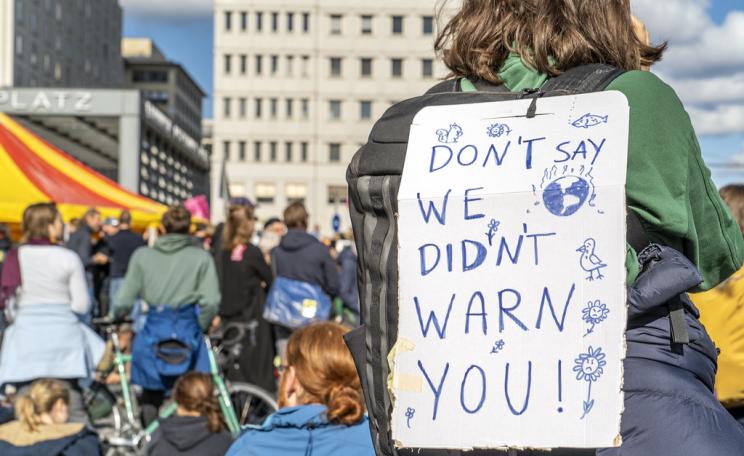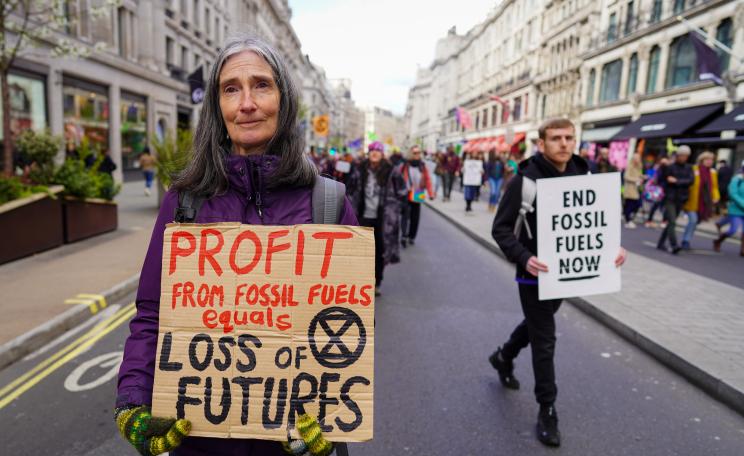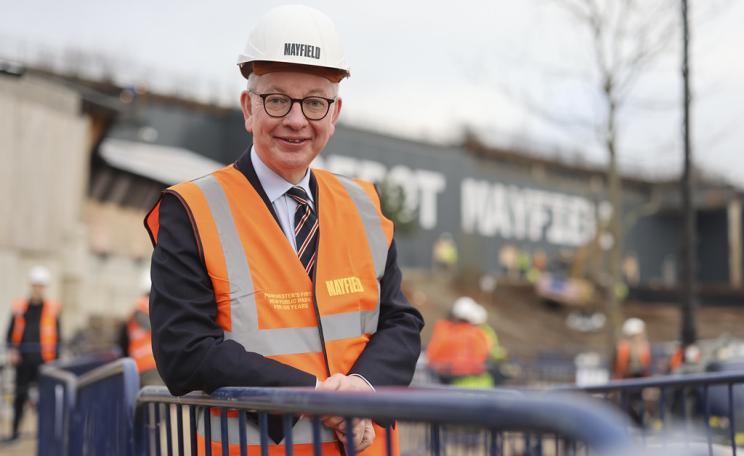Particularly insidious here is its support for bioenergy capture and storage (BECCS), which relies on unsustainable harvesting of wood pellets.
The Committee on Climate Change (CCC), instituted by the Climate Change Act in 2008, is the most important and influential official body in the UK concerned with climate change policy. It is primarily responsible for setting the five-yearly budgets that are supposed to keep the UK on a path to reach net zero carbon emissions by 2050.
Some readers of The Ecologist may be surprised to learn that up to now the UK Government has managed to stay within those budgets. The main reason for this ‘success’, however, is that the budgets have been far too generous.
The first budget in 2008-12 was for three billion tonnes of greenhouse gases, and the second and third budgets, taking us up to the end of 2022, were for 2.8 and 2.5 billion tonnes respectively. This back-ended approach was justified on the basis that the UK needed time to build the momentum required and progress would be accelerated from 2023 onwards. However…
Retrofitting
The UK has experienced little difficulty in remaining within these budgets, with the second budget being significantly underspent at 2.4 billion tonnes. Given the fall in emissions in 2020 due to Covid, this underspend is certain to be repeated for the third budget period, even if emissions return to 2019 levels for year 2022.
The three budgets taken together envisaged an increase in renewable energy capacity of 23 billion watts (23GW) of wind power and 4GW of non-wind (Fourth Carbon Budget, p107). Actually, however, by 2019 the UK had achieved 24GW of wind power and 16GW of non-wind (14GW of solar and 2GW of hydro). And arguably, much more renewable capacity could have been added if in 2016 subsidies for renewable energy had not been removed and onshore wind generation had not been effectively banned.
In other respects, the CCC proved to be rather off the mark. It envisaged one nuclear power plant every 18 months from 2018, it expected all lofts and cavity walls to be insulated by 2015 and 2.7 million solid walls to be insulated by 2020, along with efficient glazing, floor insulation, room thermostats and lagged pipes and cylinders, zero carbon new build homes, and 1.7 million electric cars (Fourth Carbon Budget, p107).
Needless to say, perhaps, none of these expectations have been met - though electric cars are now becoming more common. And yet a decline in greenhouse gas emissions has occurred, anyway. Three factors have been key to this: the closure of the UK’s coal mines, the reduced demand for energy and carbon-intensive products due to austerity, and the ongoing decarbonisation of the national grid.
Therefore, these early budgets could and should have been set tighter, to ensure that more renewable energy capacity would have been built, that a programme of mass retrofitting of people’s homes could have been set in motion earlier, and that the deadline for new homes to be carbon-free would not have been postponed.
Particularly insidious here is its support for bioenergy capture and storage (BECCS), which relies on unsustainable harvesting of wood pellets.
Overspend
The Fourth Carbon Budget published in 2010 expected 30-40GW of additional ‘low-carbon capacity’ - wind, marine, nuclear, and coal and gas carbon capture and storage - from 2020-2030 (Fourth Carbon Budget, p23), and this has been revised to mean 40GW of offshore wind in the CCC’s latest report (2022, p83). This enables further decarbonisation of electricity but the exact extent of this decarbonisation remains unclear, and it looks insufficiently ambitious in comparison with the government’s commitment to 50GW of offshore wind capacity by 2030 (CCC, 2022, p83).
In the Fourth Carbon Budget, 60 per cent of new cars and vans were expected to be electric in 2030 (p23), but these were assumed to be mainly hybrids. Installation of heat pumps and biomass boilers was also expected (p23), and this has been clarified to mean 900,000 heat pump installations by 2028 (p83). Since the government’s Net Zero Strategy commits only to 600,000 heat pump installations by 2028, this is the only area of policy apart from food where the CCC’s ambition exceeds that of the government.
Other recommendations from the Fourth Carbon Budget do not appear to have progressed from the preceding budgets. These include whole house retrofitting, carbon capture and storage, afforestation, and shifting to diets with less meat and dairy.
We are now at a point where the government has approved the fourth, fifth and sixth carbon budgets. These are much tighter than the earlier ones, at 2.0, 1.7 and 1.0 billion tonnes, respectively. So it is not surprising to find that, even at 2020 levels of emissions (0.41 billion tonnes), the UK is well on course to overspend its fourth carbon budget (by 2028).
In its latest Annual Report, the CCC claims that this budget has ‘better prospects’ (CCC, p22) for being met than the UK’s 2030 Nationally Determined Contribution under the Paris Agreement of 2015, but it fails to recognise just how poor these prospects actually are.
Problematic
The CCC rightly criticises the government’s Net Zero Strategy for its lack of policy and detailed planning on just about everything: land use, agriculture, energy efficiency, waste management, diets, demand management generally, public engagement, skills development, green infrastructure and climate adaptation (pp14-15). But how much better is the CCC’s own balanced net zero pathway?
Since the fourth budget was set in 2010, much has changed. The original aim was to reduce the UK’s emissions by 80 per cent in 2050 compared with 1990, on the basis that this would achieve emissions of 2 tonnes of carbon dioxide per person in 2050.
This would, if replicated around the world, deliver a 50 per cent cut in global emissions, which would be sufficient to limit global temperature increases to two degrees Celsius above pre-industrial levels by 2100 (Fourth Carbon Budget, p47). However, a more straightforward determination of a country’s carbon budget would be based on its share of the global population.
Since 2020, the U Government’s aim is for zero emissions in 2050, on a path to limit global warming to 1.5 degrees Celsius by the same date - and maybe allowing for a period of overshoot. It would be reasonable to conclude that this would require even tighter budgets in the future but the CCC is of the view that this is not necessary - which is understandable, given the likely overspend on these later budgets!
The most recently approved one, the sixth carbon budget (for 2033-37), published in 2020, contains little that is new except an emphasis on developing hydrogen production and a greatly increased reliance on CCS, both of which are problematic in terms of reducing emissions because they largely depend on the burning of fossil fuels in the first place.
Raison d’être
The CCC’s 2022 report makes various recommendations for early action but mostly these relate to target dates of 2030 and 2035, not to the end of the fourth budget period in 2027. As with the government’s proposals, there is little to show how much reduction in emissions these recommendations would be likely to achieve by 2028. So, in spite of the CCC’s assertion that ‘major progress must be made on near-term emissions reduction’ (p63), the progress envisioned by the fourth carbon budget looks like small beer.
The fourth carbon budget is therefore almost certain to be overspent, even if the government were to do what the CCC expects - which is unlikely, given its approval of new coal mines and new licenses for exploration and extraction of gas and oil, not to mention its support for airport expansion, £27 billion roads programme, doubling of defence spending, and much more.
The CCC’s approach is flawed in other ways. For example, rather than accelerating the generation of cheaper renewable energy and substituting such energy for fossil fuels in electricity supply, using well tried and trusted technologies, the CCC continues to recommend untried, untested and expensive technologies of carbon capture and storage that allow continued combustion of fossil fuels.
Particularly insidious here is its support for bioenergy capture and storage (BECCS), which relies on unsustainable harvesting of wood pellets. No carbon emitted by burning such wood has yet been captured - see Drax Plc's carbon capture.
Using bioenergy for fuel also requires a considerable amount of land on which to grow the crops. The CCC envisage that a massive 260,000 hectares of agricultural land can be made available for this purpose as a result of a decline in livestock farming that in turn will stem from the expected shift to plant-based diets (CCC, 2022, pp80,279) - 20 per cent by 2030 and 35 per cent by 2050. However, this proposal has not been taken up by government and seems merely a fanciful scenario.
In the longer term there is cause for concern, if only because of the failures in the short term. The practically inevitable failure of the fourth carbon budget, for which the CCC must itself bear some responsibility, will mean not only that the 1.5 degree limit will be overshot but also that budget deficits will have to be carried forward, increasing the risk that net zero will not be reached by 2050. The CCC’s raison d’être seems to be at stake, but it seems unaware of it.
This Author
Peter Somerville is emeritus professor of social policy at the University of Lincoln. For further reading, see The continuing failure of UK climate change mitigation policy (2021).







